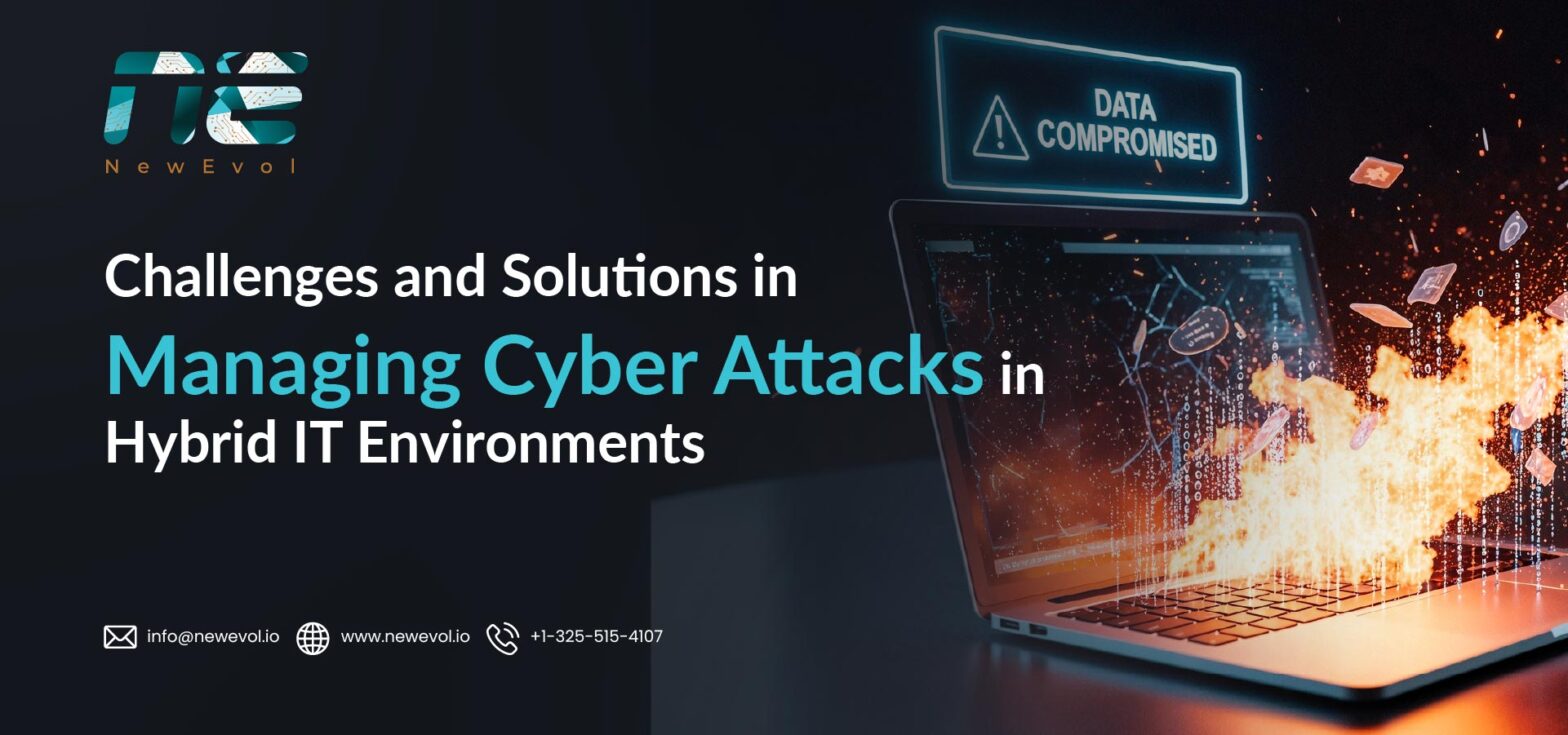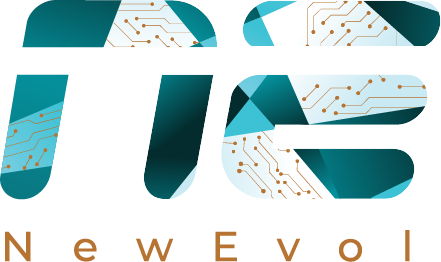Challenges and Solutions in Managing Cyber Attacks in Hybrid IT Environments

When we talk about hybrid IT, we mean the mix of on-premises systems, public and private clouds, and SaaS applications that many companies use today. It’s attractive because it gives businesses speed, flexibility, and cost savings. You can spin up new services fast, scale your resources when needed, and let your teams work from anywhere.
But here’s the catch: managing security in this setup is tricky. Logs, data, and access points are spread across multiple environments, and each platform has its own rules and risks. That makes it harder for security teams to see what’s really happening and respond quickly when cyberattacks strike. For U.S. companies especially, compliance and data privacy add another layer of complexity.
Why Hybrid IT Is Attractive
Hybrid IT is popular because it gives companies the best of both worlds. On one hand, you get the control of on-prem systems for sensitive workloads. On the other, cloud platforms let you scale quickly, experiment with new apps, and save on infrastructure costs. It also supports remote teams, so employees can access what they need from anywhere without slowing down business operations.
Why It Complicates Security
The same flexibility that makes hybrid IT attractive also makes it harder to secure. Different environments mean different security rules, tools, and logs. Teams often struggle to get a full view of their systems, making it easier for attackers to hide. Add in multiple cloud providers, SaaS apps, and remote endpoints, and the chances of misconfigurations, gaps, or overlooked threats grow. For U.S. organizations, you also have to juggle state and federal data privacy rules, which makes protecting information even more challenging.
Top 7 security challenges in hybrid IT
Managing hybrid IT comes with a mix of advantages and headaches. While it offers flexibility and scale, it also introduces unique security challenges that every organization needs to address. Here are the top seven issues U.S. companies face — and practical ways to tackle them.
1. Visibility & Telemetry Gaps
In hybrid environments, data and logs are scattered across on-prem systems, multiple clouds, and SaaS applications. Security teams often can’t see everything, which slows down threat detection and incident response. Without a unified view, small alerts can be missed until they become major breaches.
Solution: Implement a centralized telemetry system using a SIEM or data lake to collect and normalize logs from all environments. Standardize logging and ensure coverage for cloud workloads and endpoints.
2. Identity & Credential Risks
Stolen credentials remain one of the top ways attackers breach companies. With remote work, employees access multiple platforms from different locations, increasing exposure to phishing, password reuse, and malware attacks.
Solution: Enforce strong identity controls, like multi-factor authentication (MFA), passkeys, conditional access, and privileged access management (PAM). Regularly review and revoke unnecessary privileges.
3. Cloud Misconfigurations & Sprawl
It’s easy for cloud services to be misconfigured — open storage buckets, exposed APIs, or excessive permissions can create major security gaps. Plus, unmanaged cloud services multiply the attack surface.
Solution: Use cloud security posture management (CSPM), IaC scanning, runtime posture checks, and automated remediation. Limit permissions using the principle of least privilege.
4. Data Protection & Compliance Across Jurisdictions
Data stored across multiple states and platforms can run into U.S. privacy laws like CCPA/CPRA and industry regulations like HIPAA. This makes protecting sensitive information and meeting compliance requirements more complex.
Solution: Classify and encrypt data at rest and in transit, implement robust cloud key management, and map all sensitive data flows. Keep vendor agreements and processing activities documented.
5. Lateral Movement & Network Segmentation Issues
Once an attacker gains access, they can move laterally between on-premises systems and cloud workloads. Weak network segmentation makes it easier for them to access sensitive systems.
Solution: Apply microsegmentation, deploy host and network intrusion detection, implement Zero Trust Network Access (ZTNA), and monitor east-west traffic to contain threats.
6. Alert Fatigue & SOC Inefficiency
Security teams often face hundreds or thousands of alerts from multiple platforms daily. With staff shortages, it’s hard to triage and respond quickly, increasing the risk that real threats are missed.
Solution: Use automation and SOAR playbooks to handle repetitive alerts. Prioritize alerts using risk scoring and consider managed detection and response (MDR) services to augment internal SOCs.
7. Supply Chain & Third-Party Risks
Hybrid IT often relies on multiple vendors, SaaS apps, and integrations. Each external connection is a potential attack path. Compromised third-party services can directly impact your security.
Solution: Perform regular vendor risk assessments, enforce least-privilege access, segregate integration tokens, and continuously monitor third-party connections for unusual activity.
Practical, phased approach to reduce risk
Managing security in a hybrid IT environment can feel overwhelming, but breaking it down into clear phases makes it manageable. Here’s a step-by-step approach U.S. companies can follow to reduce risk and strengthen defenses.
1. Assess & Map Your Environment
Start by understanding your full IT landscape. Identify all on-premises systems, cloud workloads, SaaS apps, and remote endpoints. Map data flows, sensitive assets, and user access. This helps pinpoint gaps in visibility and areas of highest risk.
2. Consolidate Visibility
Once you know what’s out there, centralize logs and telemetry from all systems. Use a SIEM or data lake to collect and normalize data. This unified view lets your SOC detect threats faster and reduces blind spots.
3. Harden Identity & Access Controls
Secure the gateways to your environment. Enforce strong authentication (MFA, passkeys) and conditional access, and implement privileged access management (PAM). Ensure employees and third-party vendors only have the access they truly need.
4. Automate Detection & Response
Leverage automation and SOAR playbooks to handle routine alerts and remediate common threats. This helps reduce alert fatigue, speeds up response times, and frees your security team to focus on high-priority incidents.
5. Test, Iterate & Improve
Security is never “done.” Run regular tabletop exercises and penetration tests to validate controls. Continuously update your policies, tools, and playbooks based on lessons learned and emerging threats.
Immediate actions checklist
Sometimes, the best way to improve security is to start with concrete steps you can take right now. Here’s a quick checklist of 10 actions every organization should implement to protect hybrid IT environments.
- Enable centralized logging across all on-prem, cloud, and SaaS platforms.
- Enforce multi-factor authentication (MFA) and passkeys for all users.
- Conduct cloud configuration scans and fix misconfigurations.
- Deploy endpoint detection and response (EDR) across devices.
- Classify sensitive data and apply encryption at rest and in transit.
- Implement conditional access policies based on user risk.
- Automate alert triage and response using SOAR playbooks.
- Review and restrict third-party and vendor access regularly.
- Conduct tabletop exercises and simulated attack drills.
- Maintain immutable, regularly tested backups for critical data.
How NewEvol Helps Secure Hybrid IT
At NewEvol, we understand that hybrid IT comes with both opportunity and risk. Our platform is designed to give organizations a unified view of security across on-premises, cloud, and SaaS environments. By combining advanced analytics, automated response, and flexible
integration with existing tools, NewEvol helps security teams cut through noise and focus on real threats.
Key benefits include:
- Centralized visibility through our SIEM & Data Lake, reducing blind spots across multiple environments.
- Automated threat response that limits attacker dwell time and reduces SOC fatigue.
- Flexible integrations with existing cloud, on-prem, and third-party tools, so you don’t have to start from scratch.
- Support for compliance with U.S. data privacy and industry regulations, making it easier to manage audits and reporting.
Final Thoughts
Hybrid IT is no longer the exception — it’s the standard for most U.S. organizations. While it brings speed, flexibility, and cost savings, it also introduces complex security challenges that can’t be ignored. The key is to approach security in phases: gain visibility, strengthen identity controls, automate responses, and continuously test your defenses.
Cyberattacks will keep evolving, but with the right mix of technology, processes, and people, companies can manage risk without slowing down innovation. The goal isn’t to eliminate every threat — it’s to stay resilient, respond quickly, and keep business running with confidence.
FAQs
1. Which challenge is associated with managing a hybrid IT infrastructure?
The biggest challenge is visibility — logs, data, and user activity are spread across on-prem and cloud systems, making it harder to detect threats.
2. What are the security challenges in a hybrid cloud environment?
Key challenges include identity risks, misconfigurations, compliance issues, lateral movement of attackers, and alert fatigue in SOC teams.
3. What are the top two challenges for hybrid cloud adoption?
The top two are ensuring consistent security across multiple environments and meeting regulatory or data privacy requirements.
4. What is hybrid cyber security?
Hybrid cyber security is the strategy of protecting both on-premises and cloud systems with unified controls, monitoring, and response.

